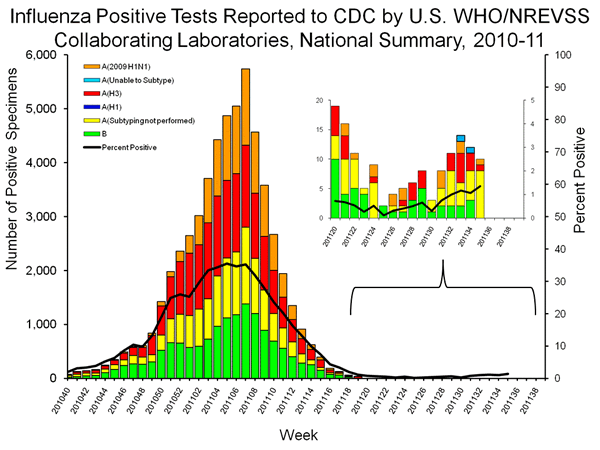

Paradigm Shift Intervention Monitoring
 twitter
twitter

Commentary
Unsubtypables
Raise trH3N2 Pandemic Concerns
Recombinomics Commentary 02:20
September 10, 2011
The presence of only two of the four cases is likely due to the number that has been conclusively shown to be negative in the H3 sub-typing assay or the typing of some as seasonal H3N2. Thus, the number of unsubtypable may increase in upcoming weeks as the samples are more fully tested.

The graph also includes the latest data, week 35, which had 10 positive samples, all of which were influenza A. However, only two were sub-typed (pandemic H1N1 and seasonal H3N2). The low frequency of samples sub-typed may reflect additional cases that are unsubtypable. These would represent new trH3N2 cases because the earlier trH3N2 samples were collected in weeks 30 and 34. The absence of an unsubtypable in week 30 may indicate A/Indiana/08/2011 has not been added yet or is not included in samples that are reported by FluView. Thus, many of the p"not suntyped" by in fact be trH3N2 while others designated as seasonal H3N2 may in fact be trH3N2, as was seen for A/Pennsylvania/40/2010.
Thus, while all recent unsubtypables may be trH3N2, all trH3N2’s may not register as unsubtypables. Therefore, these recent isolates that were designated as seasonal H3N2 should be PCR tested to see if they are really trH3N2.
Concerns that recent influenza A positives are trH3N2 are increased by the lack of sub-typing for the week 35 isolates, where only 2 of the 10 samples have been sub-typed. Thus, all influenza A samples should be PCR tested to determine the true frequency of trH3N2 cases circulating in the United States.
This summer the CDC has released five recent H3N2 sequences from the US, and four of the five are trH3N2.
Recombinomics
Presentations
Recombinomics
Publications
Recombinomics
Paper
at Nature Precedings